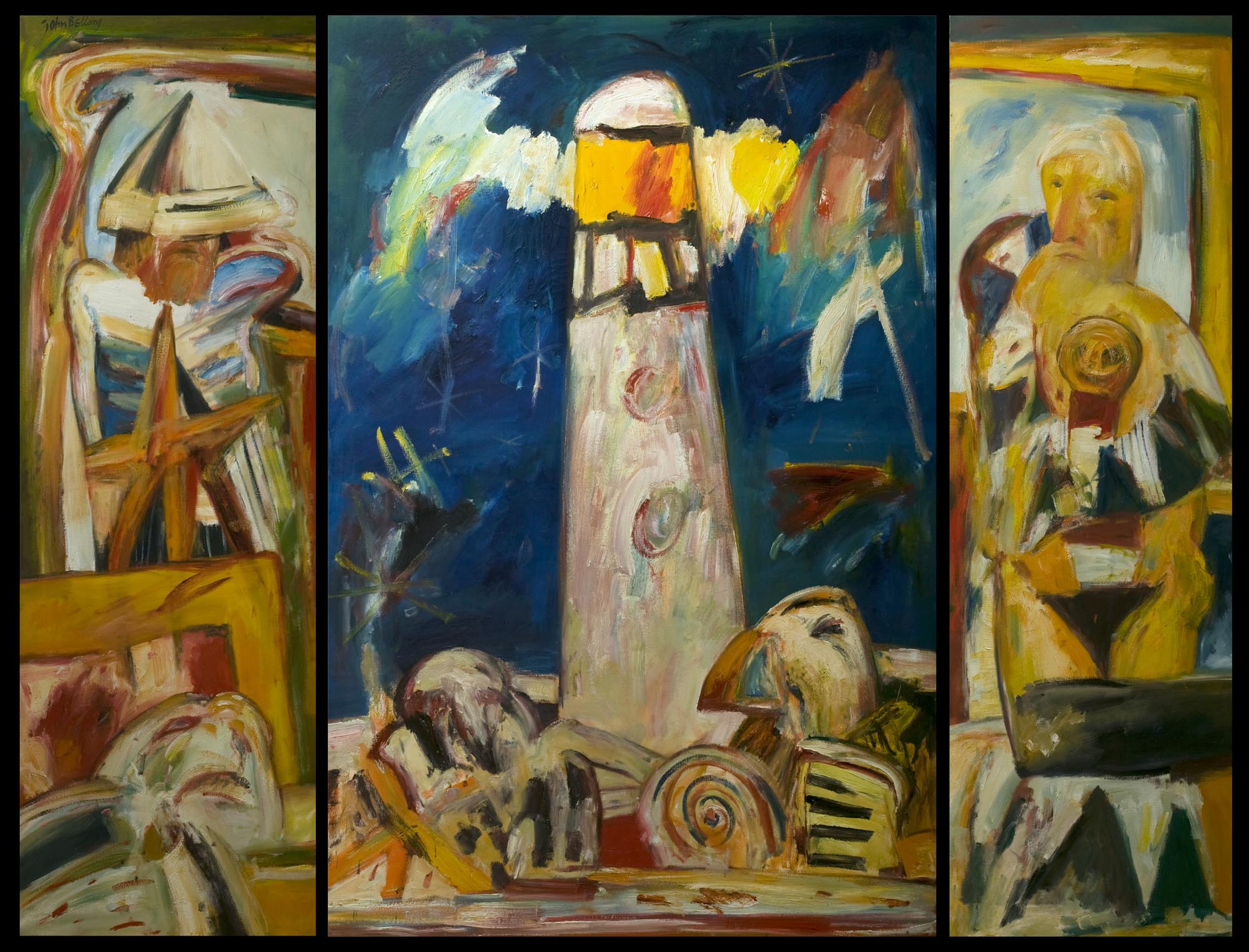Object of the Month: July 2020
This month's highlighted object is a a painting; Lune de Miel by John Bellany.
Published: 6 July 2020

John Bellany (1942-2013), Lune de Miel (Towards the Lighthouse) (triptych), 1980, © The Artist’s Estate
Chosen by
Alice Strang, Art Historian
Collection
Fine Art
Object Name
Lune de Miel (Towards the Lighthouse)
Place made
UK
Object information
John Bellany was born in Port Seton, a fishing village on the East Lothian coast. He studied at Edinburgh College of Art and the Royal College of Art in London. His father and both of his grandfathers were fishermen and his religious upbringing amidst the fishing community featured prominently in his work. An unflinching explorer human nature, Bellany investigated concepts of life and death and of the sacred and profane. Frank autobiographical references made his work highly personal and were often part of a merging of the contemporary with the presence of the past.
Lune de Miel (Towards the Lighthouse) of 1980 is a monumental triptych (work composed of three parts), which features a central panel flanked by panels of half its width. This format is common amongst Renaissance altarpieces, as Bellany boldly places himself and his work within the tradition of art history. Whilst resisting precise interpretation of his work, ‘Lune de miel’ means ‘honeymoon’ in French and Bellany made this painting the year after marrying his second wife, Juliet Lister (1939-1985).
The titular lighthouse, phallic symbol of warning and protection for those at sea, sends its beams out into the night sky in the middle image. A self-portrait of the artist as puffin can be seen in a boat at its base, playing an accordion to his barely legible companion, presumably Lister. The figures in the side panels are perhaps guardians, predecessors and witnesses to the artist’s marriage. They too are surrounded by marine symbols, from starfish to skate. Bellany’s bravura manipulation of oil paint and use of highly-keyed colours is maintained throughout the work, with a technique as expressive as the scenes it renders. The triptych is an unromanticised depiction of a tempestuous relationship which ended with Lister’s death in 1985. It was purchased for the collection with the assistance of the Museums and Galleries Commission and the Victoria and Albert Museum Purchase Grant Fund in 1982.
Discover more Scottish Art from the collection of Leicester Museums & Galleries.
